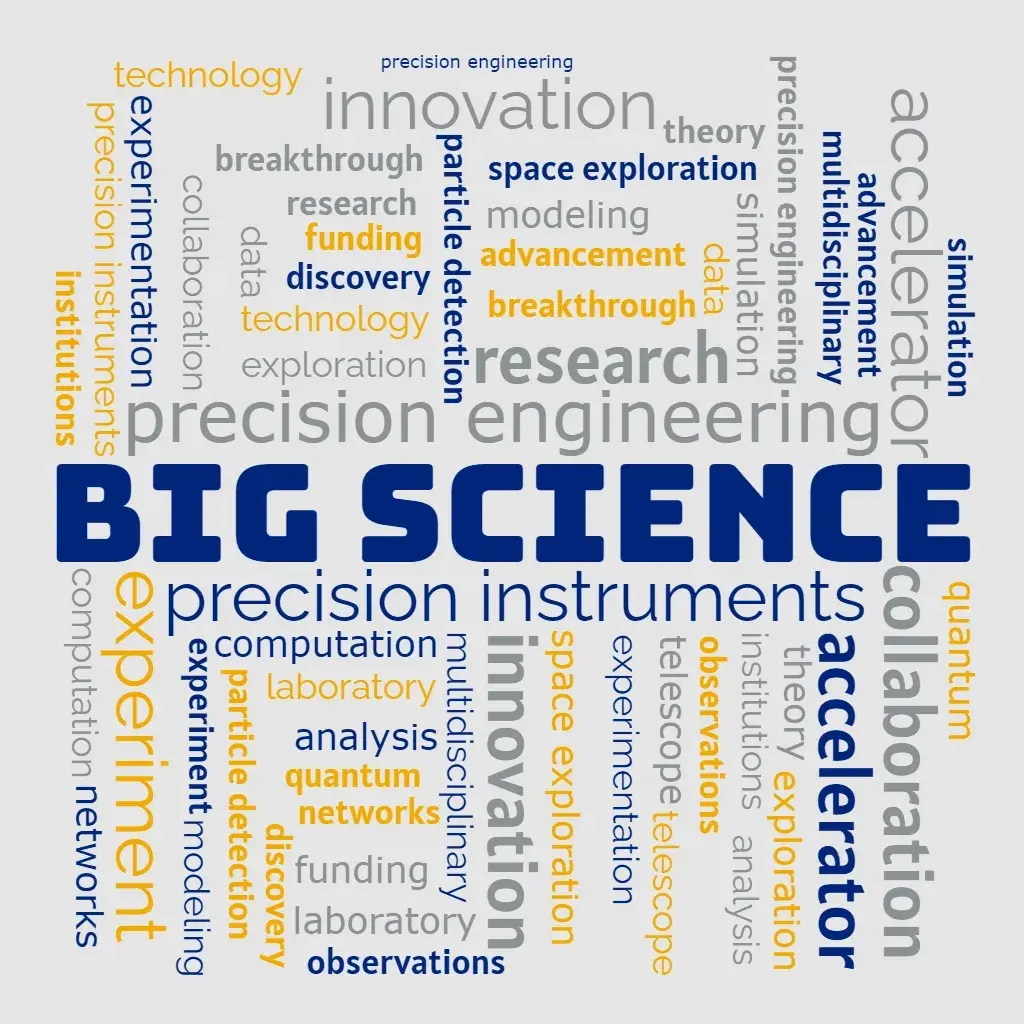- Engineering
- Measuring systems
- Machine qualification
-
Components
-
Systems
-
Learn more
-
- Expertise
-
About IBS
-
Our Story
-
Learn More
-

Big Science involves large-scale, collaborative projects tackling global challenges like space exploration and climate change. IBS supports these efforts by developing ultra-precise machines, modules, instruments and components essential for breakthrough discoveries.
Big Science initiatives demand advanced technology and international cooperation. IBS is a key player in this domain, designing and producing ultra-precise machines and instruments crucial for Big Science projects. By partnering with top research institutions, IBS provides specialized equipment for projects like particle accelerators and space telescopes, ensuring the precision required for groundbreaking scientific discoveries.
![]()
Read how IBS has contributed to some of the most complex and demanding Big Science initiatives; through custom-engineered solutions that meet the rigorous standards of precision and reliability required by such groundbreaking efforts.
Since 2004, we have provided CERN with our metrology expertise, a partnership that has grown into the largest development contract ever awarded to a Dutch company. This collaboration led to the design and realization of ALICIA, a sensor module assembly machine integral to the ALICE detector upgrade. ALICE (A Large Ion Collider Experiment) is dedicated to studying heavy-ion physics at the Large Hadron Collider.
ALICIA was developed to measure and assemble the 15,000 sensor chips which make up the new detector. Working closely with CERN teams across the globe, the machine accommodated changing requirements as the sensor chip technology developed; from chip size to positioning accuracy and test protocols. Assembly and inspection of one sensor module generates 0.5 terabytes of information. The collection and processing of this amount of big data was an additional challenge which was solved. The first machine, ALICIA 1, passed the site acceptance test at CERN and seven more machines have since been delivered to sites around the globe.
Osteoarthritis (OA) affects a large portion of the global population, yet early detection methods are insufficient. A study aimed to better understand how early-stage OA affects joint tissue morphology and mechanical behaviour. By using advanced imaging from the Diamond Light Source and the University of Manchester, researchers developed a special technique for 3D imaging of joint tissues at the cellular level under lifelike loading conditions.
Three key advances were combined — low-dose pink phase contrast imaging, a nano-precision loading device developed by IBS Precision Engineering and bespoke Digital Volume Correlation (DVC) software — to achieve 100-nanometre resolution for visualising tissue strain. The IBS nano-precision loading device enabled the application of controlled compressive forces to joint tissues while minimising artefacts from tissue movement. This setup, incorporating precision synchronous z- and rotational positioning under differnt loading modes, allowed researchers to observe nanometre-scale mechanical changes without tissue damage, offering significant insights into how cartilage distributes load during OA progression and aiding in early treatment evaluation.
The high-resolution soft X-ray spectrometer (RIXS) at the European Synchrotron Radiation Facility (ESRF) in Grenoble, France, is a critical tool for exploring atomic-level properties of materials, essential for advancing science in fields like condensed matter physics. To achieve this, the spectrometer must rotate a massive 6.3-ton detector with extreme precision around a sample, capturing high-resolution 3D images. This movement is made possible by eight 300mm-diameter air bearings supplied by IBS, which provide near-frictionless support, enabling smooth, accurate rotation through a 100° arc without disrupting the ultra-high vacuum needed for experiments. These air bearings ensure the instrument achieves its goal of maintaining an exceptional resolving power of E/ΔE better than 30,000, allowing researchers to conduct detailed investigations into material properties.
Air bearings are a crucial innovation in such large-scale scientific instruments, offering a friction and wear free solution for precise and smooth movement.
